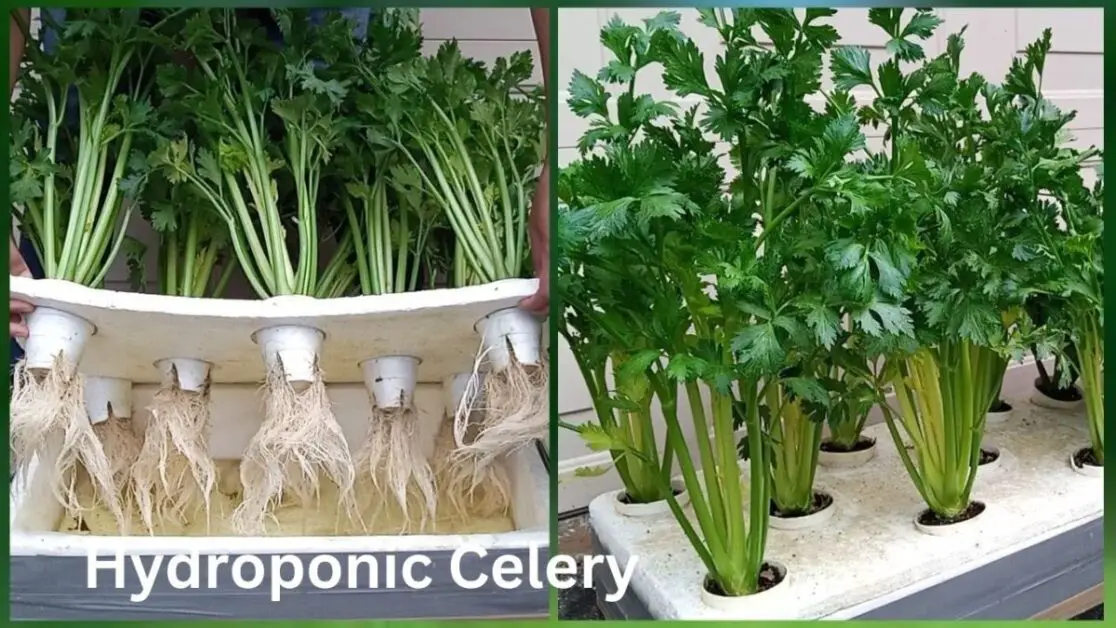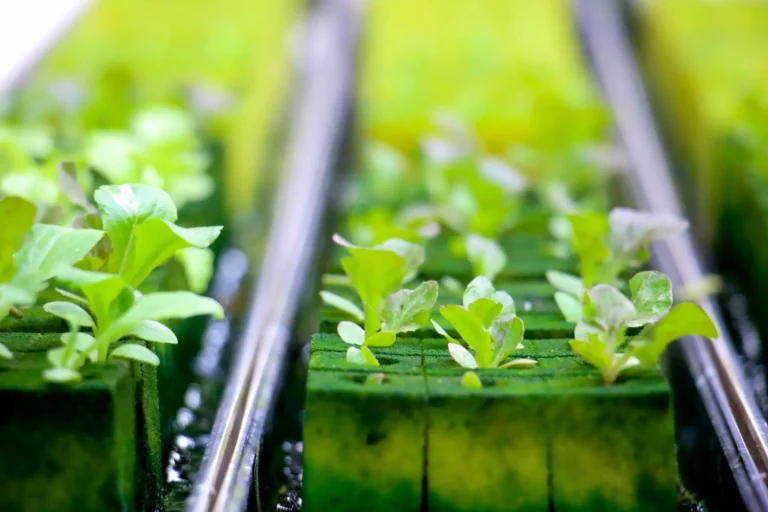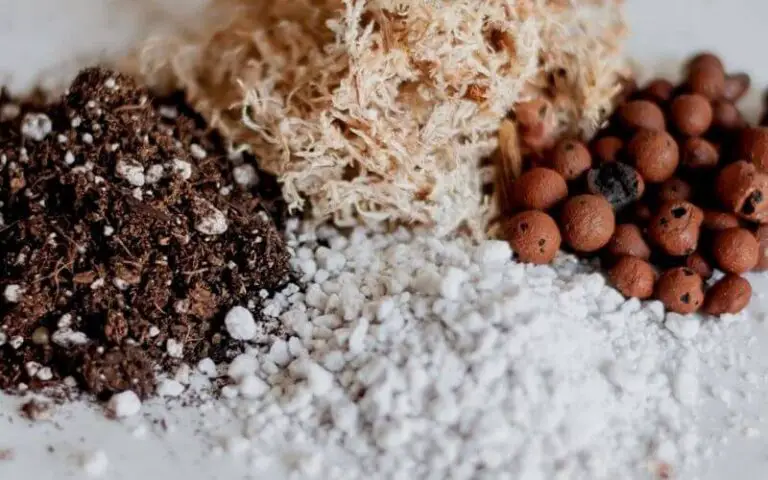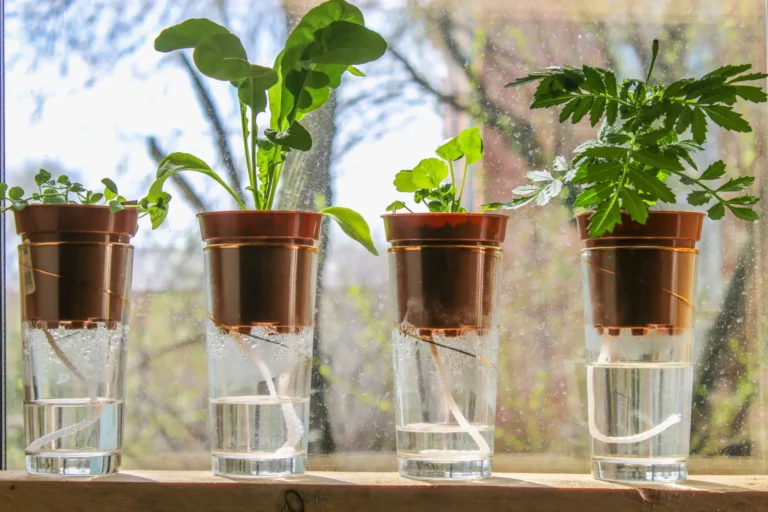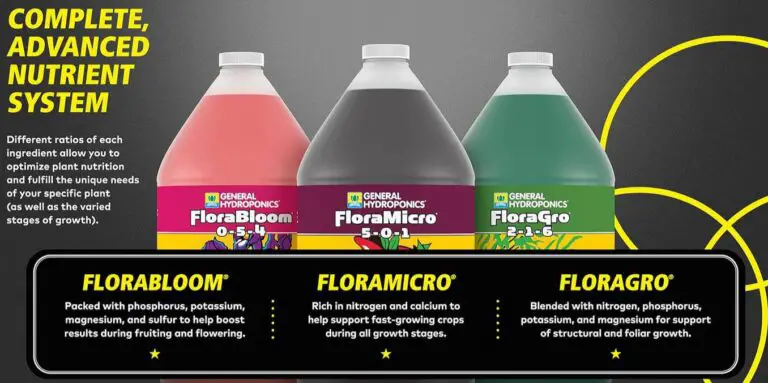Hydroponic Celery: to Grow Crisp and Nutritious Celery in Water
The Advantages of Hydroponic Celery Cultivation
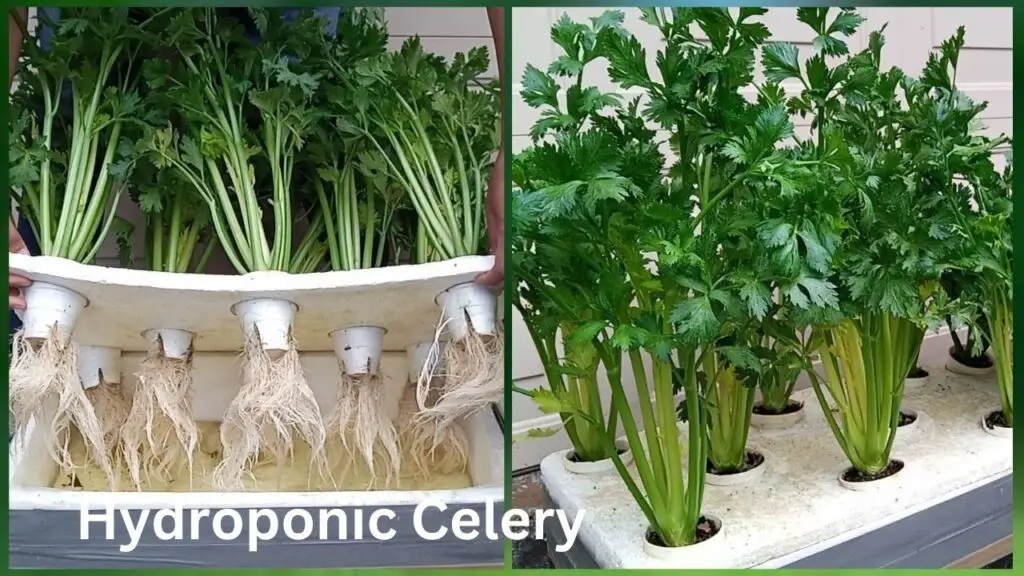
Hydroponic celery cultivation offers numerous advantages over traditional soil-based methods. One of the key benefits is the significant reduction in water usage. Hydroponic systems are designed to recirculate water and nutrients, resulting in up to 90% less water consumption compared to conventional farming. This not only conserves a precious resource, but also minimizes the risk of water-related diseases and excessive runoff.
Another advantage of hydroponic celery cultivation is the ability to optimize growing conditions for maximum yields. With precise control over nutrient levels, pH, and lighting, hydroponics allows growers to create an ideal environment for celery plants. This results in faster growth rates, healthier plants, and higher crop quality. Furthermore, hydroponic systems can be designed to accommodate limited space, making it possible to cultivate celery in urban areas or areas with poor soil quality.
By harnessing these advantages, hydroponic celery cultivation presents a sustainable and efficient solution to meet the growing demand for fresh, nutritious produce. Whether it is to enhance food security, reduce environmental impact, or maximize productivity, this innovative approach to celery cultivation holds immense promise for the future of agriculture. With further research and development, the potential for hydroponic systems to revolutionize the way we grow and consume celery is undoubtedly exciting.
Understanding the Basics of Hydroponics for Growing Celery
Hydroponics is a revolutionary method of growing plants without the use of soil. This innovative technique has gained popularity among gardening enthusiasts, allowing them to cultivate crops in a controlled environment. Celery, a versatile and nutritious vegetable, can also thrive in hydroponic systems. Understanding the basics of hydroponics for growing celery is essential for successful cultivation.
In hydroponics, plants are grown in a nutrient-rich water solution, which provides all the essential minerals and elements required for their growth. This method offers several advantages over traditional soil-based cultivation. One of the key benefits is water efficiency, as hydroponic systems use significantly less water compared to soil-based farming. Additionally, the controlled environment ensures optimal conditions for plant growth, including temperature, humidity, and lighting. These factors contribute to accelerated growth rates and higher yields in hydroponic celery cultivation.
To embark on a successful hydroponic celery journey, selecting the right hydroponic system is crucial. Various types of hydroponic systems are available, such as nutrient film technique (NFT), deep water culture (DWC), and ebb and flow systems. Each system has its own advantages and considerations, so careful consideration should be given to the specific needs and goals of your celery cultivation. By choosing the appropriate system, you can create an optimal growing environment for your celery plants and maximize their productivity.
Now that we have grasped the foundation of hydroponics for growing celery, let us delve deeper into the intricacies of selecting the ideal nutrient solution for hydroponic celery.
Selecting the Right Hydroponic System for Growing Celery
When it comes to selecting the right hydroponic system for growing celery, there are a few key factors to consider. Firstly, it’s important to choose a system that provides adequate support for the celery plants, as they can grow quite tall and require sturdy structures to prevent them from toppling over. Options such as vertical systems or trellises can be great choices for this purpose.
Secondly, the system should offer a way to deliver the necessary nutrient solution to the celery plants. This can be achieved through various methods, such as drip irrigation, nutrient film technique (NFT), or deep water culture (DWC). Each of these systems has its advantages and considerations, so it’s essential to choose the one that aligns best with your specific needs and resources. Additionally, considering the available space for the hydroponic setup is crucial, as some systems may require more room than others.
Choosing the Ideal Nutrient Solution for Hydroponic Celery
The nutrient solution is a vital component of hydroponic celery cultivation, as it provides the necessary elements for the plant’s growth and development. When choosing the ideal nutrient solution for your hydroponic celery system, it is important to consider the specific requirements of this crop.
Celery is a nutrient-hungry plant that requires a balanced mix of essential elements to thrive. It is recommended to use a hydroponic nutrient solution specifically formulated for leafy greens or vegetables. These solutions are designed to provide an optimal balance of macronutrients (such as nitrogen, phosphorus, and potassium) and micronutrients (such as iron, magnesium, and calcium) that are essential for celery’s nutritional needs. Additionally, it is crucial to ensure that the nutrient solution is free from any harmful contaminants, as these can negatively impact the plant’s health and productivity.
To determine the appropriate nutrient solution for hydroponic celery, it is advisable to conduct regular water and tissue testing. This will help you understand the nutrient levels and potential imbalances in your system. Based on the results, you can adjust and customize the nutrient solution accordingly, ensuring that your celery plants receive the precise nutrients they require for optimal growth and development.
Preparing the Hydroponic Setup for Growing Celery
To successfully grow celery using hydroponics, it is crucial to prepare the hydroponic setup properly. The first step is to choose the right type of hydroponic system for celery cultivation. There are several options available, including nutrient film technique (NFT), deep water culture (DWC), and vertical towers. Each system has its own advantages and considerations, so it’s important to select one that suits your specific needs and resources.
Once you have chosen the hydroponic system, the next step is to ensure the proper nutrient solution for your celery. Celery has specific nutritional requirements, so it’s essential to provide it with a balanced mix of macro and micronutrients. You can either purchase a pre-formulated nutrient solution that is specifically designed for celery or create your own by following a well-researched recipe. It’s crucial to regularly test and monitor the nutrient levels in the solution to maintain optimal growth and prevent any deficiencies or imbalances.
Preparing the hydroponic setup also involves setting up the necessary equipment and infrastructure. This includes installing the appropriate lighting system, which is crucial for promoting photosynthesis and ensuring healthy growth. Additionally, maintaining the ideal temperature and humidity levels within the growing area is essential for celery cultivation. It is recommended to invest in a reliable thermostat and humidifier system to regulate these environmental factors accurately.
Taking the time to properly prepare the hydroponic setup for growing celery sets the foundation for a successful growing season. By selecting the right hydroponic system, providing the correct nutrient solution, and ensuring optimum environmental conditions, you can create an ideal growing environment for your celery plants. The next steps will focus on starting celery seeds or transplants in the hydroponic system and maintaining the ideal conditions throughout their growth journey.
Starting Celery Seeds or Transplants in the Hydroponic System
Starting celery seeds or transplants in a hydroponic system is a critical step in the successful cultivation of celery. Whether you are using seeds or transplants, it is important to provide them with the right conditions to ensure healthy growth and development.
Firstly, when starting celery seeds in a hydroponic system, it is recommended to soak the seeds in water for 24 to 48 hours before planting. This helps to soften the seed coat and promote germination. Once soaked, place the seeds in a germination tray filled with a sterile growing medium such as rockwool cubes or coconut coir. Keep the environment warm and humid, typically around 70 to 75 degrees Fahrenheit (21 to 24 degrees Celsius), to encourage germination. Adequate lighting is also crucial during this stage, so make sure to provide a full spectrum of light for approximately 14 to 16 hours a day.
On the other hand, when using transplants, it is important to select healthy and disease-free seedlings for better success. Gently remove the seedlings from their container and rinse off any soil from the roots. Place the transplants into the hydroponic system, ensuring that the roots are fully submerged in the nutrient solution. Provide the transplants with the same optimal temperature and lighting conditions as mentioned earlier to help them establish and acclimate to the hydroponic environment.
Overall, whether starting celery seeds or using transplants in a hydroponic system, the key is to provide the appropriate growing conditions such as temperature, lighting, and nutrient availability. By paying attention to these crucial factors, gardeners can set the stage for successful celery cultivation in their hydroponic systems.
Maintaining the Ideal Temperature and Lighting Conditions for Hydroponic Celery
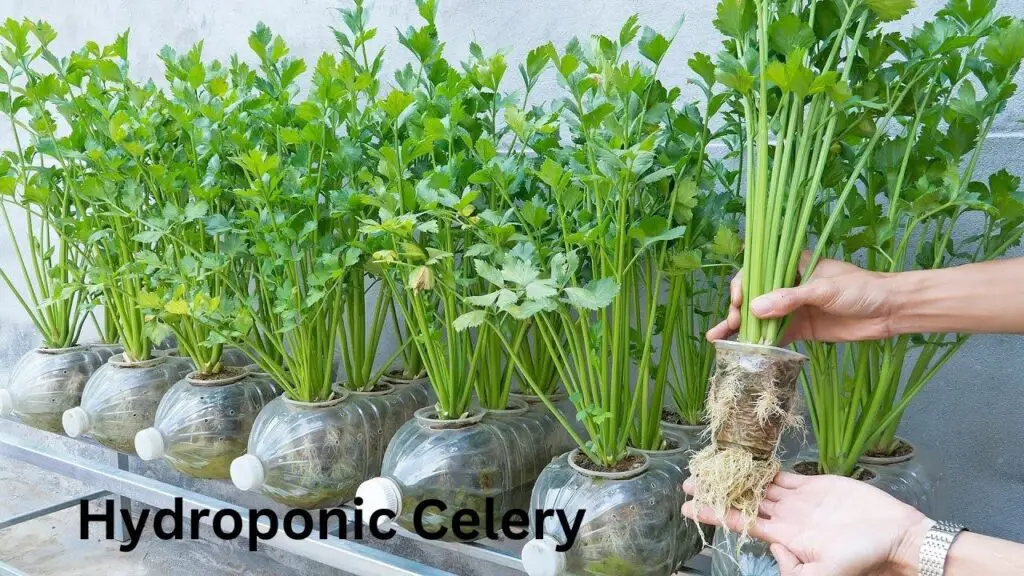
Maintaining the ideal temperature and lighting conditions is crucial for the successful cultivation of hydroponic celery. Celery plants thrive in a temperature range of 60°F to 70°F (15°C to 21°C) during the day and slightly cooler temperatures of 55°F to 60°F (13°C to 15°C) at night. These temperature ranges provide optimal growing conditions for celery, ensuring healthy growth and robust stalk development.
In addition to temperature, lighting is another key factor in promoting optimum growth in hydroponic celery. Celery plants require a minimum of six hours of direct sunlight or its equivalent in artificial lighting. For indoor hydroponic systems, high-intensity discharge (HID) lamps or light-emitting diodes (LEDs) are commonly used to provide the necessary light intensity and spectrum. Ideally, celery plants should receive blue light during the vegetative stage and a combination of blue and red light during the flowering and fruiting stage.
Properly monitoring and adjusting temperature and lighting conditions are essential for hydroponic celery cultivation. By maintaining the ideal temperature range and ensuring adequate lighting, gardeners can create a favorable environment for the growth and development of celery plants, leading to healthy and abundant harvests.
Monitoring and Adjusting pH Levels for Optimal Celery Growth
Maintaining the proper pH levels is essential for achieving optimal growth in hydroponically grown celery. The pH level refers to the acidity or alkalinity of the water used in the hydroponic system. Celery thrives in a slightly acidic environment, with a pH range of 5.8 to 6.2.
To monitor the pH levels, it is crucial to use a reliable pH meter or test kit specifically designed for hydroponic systems. Regular testing will allow you to identify any inconsistencies and take appropriate actions to bring the pH back to the desired range. Testing should be done at least once a day, preferably at the same time, to ensure accurate readings.
If the pH level goes above the optimal range and becomes too alkaline, you can lower it by using pH down solutions or natural additives like citric acid or vinegar. On the other hand, if the pH becomes too acidic, pH up solutions or substances such as potassium hydroxide or baking soda can be used to raise it.
Maintaining optimal pH levels is vital because it impacts nutrient absorption and uptake by the celery plants. When the pH is out of balance, certain minerals and nutrients may become unavailable to the plants, affecting their overall health and growth. Therefore, regular monitoring and adjustments of pH levels are crucial for ensuring healthy and thriving hydroponic celery crops.
Managing Water Quality and Oxygenation in Hydroponic Celery Systems
Water quality and oxygenation are critical factors in ensuring the successful growth of celery in hydroponic systems. Proper management of these aspects is essential to provide the ideal conditions for optimal plant development and ultimately, a bountiful harvest.
Maintaining high water quality is crucial in hydroponic celery cultivation. It is recommended to use filtered or purified water to avoid contaminants that may hinder plant growth. Additionally, regularly testing the water for pH levels, electrical conductivity, and nutrient concentration is necessary to ensure a balanced environment. This can be done using a water quality testing kit or by sending samples to a laboratory for analysis. Monitoring and maintaining the correct pH range between 5.5 and 6.5 is particularly important as it affects nutrient availability to the plants. Oxygenation is equally vital as it enables root respiration and nutrient absorption. Using an air pump or air stone to introduce air bubbles into the water reservoir will enhance oxygen levels, promoting healthy root growth and preventing root rot.
When managing water quality and oxygenation in hydroponic celery systems, attention to detail is paramount. By implementing proper protocols, gardeners can create an optimal environment for their celery plants, leading to vigorous growth and a bountiful harvest.
Nutrient Management and Feeding Schedule for Hydroponic Celery
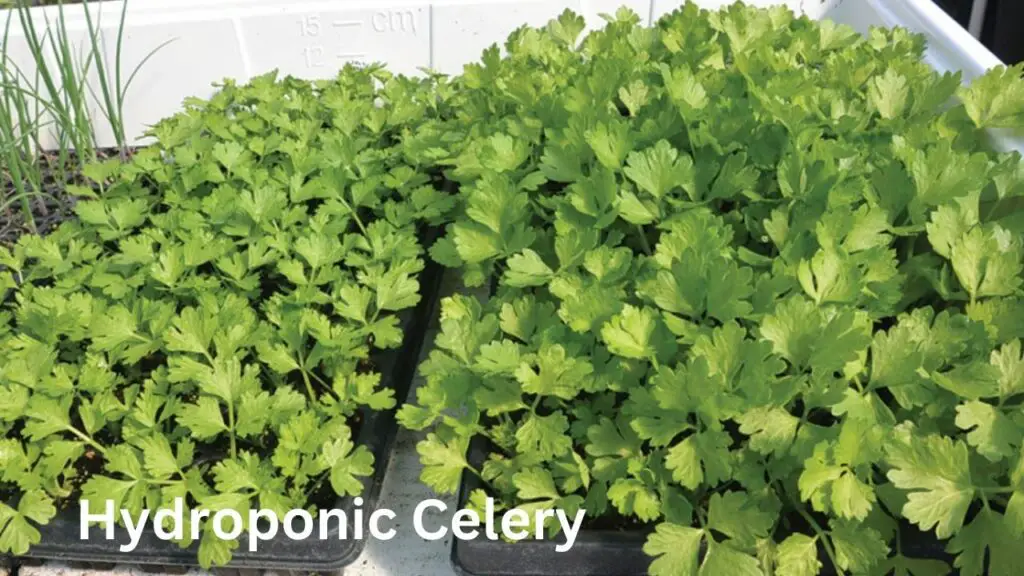
Nutrient management and proper feeding schedule are crucial aspects of hydroponic celery cultivation. In a hydroponic system, plants rely solely on nutrient solutions for their growth and development. Therefore, it is essential to provide the right balance of nutrients to ensure healthy and robust celery plants.
To begin with, it is important to understand the specific nutrient requirements of celery in the hydroponic environment. Celery requires a combination of macronutrients, including nitrogen, phosphorus, and potassium, as well as micronutrients like calcium, magnesium, and iron. These nutrients are necessary for various physiological processes, such as leaf and stem development, root growth, and overall plant vigor.
To meet the nutrient needs of hydroponic celery, it is advisable to use a high-quality commercial nutrient solution specifically formulated for leafy green vegetables. These solutions are designed to provide the optimal ratios of essential nutrients, ensuring healthy plant growth. It is important to regularly monitor the nutrient levels in the solution and adjust them accordingly to maintain the ideal balance for celery cultivation.
In terms of the feeding schedule, hydroponic celery generally benefits from a continuous, low-concentration feeding system. This means providing a steady supply of nutrient solution to the plants at a constant rate over an extended period. Many hydroponic growers use drip irrigation systems or nutrient film techniques to deliver the solution directly to the roots of the plants.
Maintaining a consistent feeding schedule helps to avoid fluctuations in nutrient availability, ensuring steady growth and preventing nutrient deficiencies or imbalances. It is essential to closely monitor the plant’s nutrient uptake and adjust the feeding schedule accordingly, especially during different growth stages.
In conclusion, nutrient management and feeding schedule play a vital role in hydroponic celery cultivation. By understanding and meeting the specific nutrient requirements of celery, growers can ensure optimal plant health and productivity. Regular monitoring and adjusting of nutrient levels, as well as maintaining a consistent feeding schedule, are key factors in successful hydroponic celery production.
Here’s a general table with information about growing celery using hydroponics:
| Aspect | Details |
|---|---|
| Growing Medium | Hydroponic system using nutrient-rich water instead of soil |
| Nutrient Solution | Balanced nutrient solution with essential macro and micronutrients |
| pH Level | 5.8 to 6.5 (slightly acidic to neutral range) |
| Temperature | Daytime: 60-70°F (15-21°C); Nighttime: 55-60°F (13-15°C) |
| Light Requirements | 12-16 hours of light per day, either natural or artificial |
| Hydroponic System Type | NFT (Nutrient Film Technique), DWC (Deep Water Culture), or other suitable systems |
| Growing Time | 85-120 days from seed to harvest, depending on the variety |
| Seed Germination Time | 10-20 days under optimal conditions |
| Spacing | Plant celery about 6-8 inches apart |
| Support | Celery may need support as it grows tall, especially if using NFT systems |
| Harvesting | Harvest outer stalks when they reach desired size, leaving inner ones to continue growing |
| Pests and Diseases | Monitor for aphids, celery leaf spot, and other common issues. Hydroponic systems can reduce some soil-borne diseases |
| Varieties Suitable for Hydroponics | Tall Utah, Tango, Ventura, and other self-blanching varieties |
| Nutrient Monitoring | Regularly check and adjust nutrient levels as needed |
| Maintenance | Check system for clogs, monitor water and nutrient levels, and maintain the appropriate pH |
| Yield | Hydroponic celery can yield high-quality, flavorful stalks |
| Challenges | Managing proper nutrient levels, preventing diseases, and providing adequate support as the plants grow |
This table provides an overview of the key aspects involved in growing celery hydroponically. Adjustments may be needed based on specific hydroponic systems and environmental conditions.
Providing Proper Support and Training Techniques for Growing Healthy Celery Stalks
Celery plants may require additional support and training techniques to help them grow healthy and robust stalks. Providing proper support ensures that the weight of the celery stalks does not cause the plants to bend or break, thus reducing the risk of damage and ensuring optimal growth.
One effective method of supporting celery plants is by using stakes or trellises. These structures can be placed strategically throughout the hydroponic system to provide support and prevent the plants from toppling over. Care should be taken to position the stakes or trellises in a way that allows the celery plants to grow upright and avoid any obstacles that may hinder their development.
Additionally, using plant ties or clips can help secure the celery stalks to the stakes or trellises, providing further support. These ties or clips should be gently fastened around the stalks, taking care not to constrict them tightly, as it may impede their growth. Regularly monitoring the celery plants and adjusting the ties or clips as necessary ensures that they are properly supported throughout their growth cycle.
With the right support and training techniques, hydroponic celery growers can ensure the proper development of healthy and strong stalks. By implementing these methods, gardening enthusiasts can enjoy bountiful harvests of crisp and flavorful celery.
Common Pests and Diseases in Hydroponic Celery and How to Prevent Them
To ensure the success of your hydroponic celery cultivation, it is essential to be aware of the potential pests and diseases that can affect your plants. While hydroponic systems are generally less prone to pests and diseases compared to traditional soil-based cultivation, it is still important to be vigilant and take preventive measures. One common pest that can pose a threat to hydroponic celery is aphids. These tiny insects feed on the sap of the plants, causing stunted growth and yellowing leaves. To prevent aphid infestation, regularly inspect your plants for any signs of these pests and remove them manually or treat them with an insecticidal soap. Additionally, introducing beneficial insects, such as ladybugs or lacewings, can help control aphid populations naturally.
Another potential threat to hydroponic celery is powdery mildew, a fungal disease that manifests as a white powdery coating on the leaves. This disease thrives in environments with high humidity and poor air circulation. To prevent powdery mildew, maintain proper ventilation in your hydroponic system and ensure adequate spacing between plants. Regularly monitor the humidity levels and use a dehumidifier if necessary. If powdery mildew does occur, remove and destroy the infected plants immediately to prevent the spread of the disease to healthy plants. Fungicidal treatments specifically formulated for powdery mildew can also be used as a last resort. By being proactive in identifying and preventing these pests and diseases, you can protect your hydroponic celery and maximize your harvest.
Harvesting and Storing Hydroponically Grown Celery for Maximum Freshness and Nutrition
Harvesting and storing hydroponically grown celery properly is essential to maintain its maximum freshness and nutrition. When it comes to harvesting celery, it is important to wait until the stalks are firm and crisp, typically around 80-90 days from planting. Gently cut the stalks at the base using a sharp knife or scissors, being careful not to damage neighboring plants or the root system.
After harvesting, it is crucial to handle celery with care to preserve its nutrients and crispness. Wash the stalks thoroughly to remove any dirt, debris, or potential pests. Pat them dry gently with a clean towel or allow them to air dry. It is advisable to store celery in the refrigerator, as this helps maintain its freshness and crisp texture. Wrap the stalks in a damp paper towel or place them in a container with water, covering the roots for continuous hydration. Avoid storing celery near fruits like apples and bananas, as these produce ethylene gas, which can quicken the deterioration process. By following these steps, you can ensure that your hydroponically grown celery stays fresh and nutritious for an extended period.
Can I use any type of hydroponic system to grow celery?
No, not all hydroponic systems are suitable for growing celery. It is important to select a system that provides adequate space for celery’s root system and allows for proper nutrient delivery.
What is the ideal nutrient solution for growing celery hydroponically?
The ideal nutrient solution for hydroponic celery should contain a balanced ratio of macro and micronutrients, including nitrogen, phosphorus, potassium, calcium, and magnesium. It is recommended to use a hydroponic nutrient solution specifically formulated for leafy green vegetables.
How do I start celery seeds or transplants in a hydroponic system?
Celery seeds can be started in small rockwool cubes or seedling trays filled with a propagation medium. Once the seeds have germinated, they can be transferred to the hydroponic system. Transplants can also be used by carefully removing them from their original containers and placing them into the hydroponic system.
What temperature and lighting conditions are ideal for hydroponic celery growth?
Celery thrives in temperatures between 60-70°F (15-21°C) during the day and slightly cooler temperatures at night. It requires around 12-14 hours of light per day, so providing supplemental grow lights may be necessary in areas with insufficient natural light.
How do I adjust pH levels for optimal celery growth?
pH levels in hydroponic celery systems should be maintained between 5.8 and 6.2. To adjust pH, you can use pH up or pH down solutions as needed and regularly monitor the pH levels using a pH meter or test strips.
How can I prevent pests and diseases in hydroponic celery?
To prevent pests, regularly inspect your plants for signs of infestation and take appropriate measures such as using insecticidal soaps or introducing beneficial insects. Maintaining proper hygiene and cleanliness in your hydroponic system can help prevent diseases from spreading.
How do I harvest celery grown hydroponically?
Celery can be harvested by cutting the stalks at the base using a sharp, clean knife or scissors. Start harvesting outer stalks first and leave the inner stalks to continue growing. Avoid pulling or twisting the stalks, as this can damage the plant.
How should I store hydroponically grown celery for maximum freshness?
After harvesting, celery should be rinsed to remove any dirt or debris and then stored in a plastic bag or container in the refrigerator. It is best to store celery at temperatures around 32-36°F (0-2°C) to maintain its freshness and crispness.
How long can hydroponically grown celery be stored?
Hydroponically grown celery can be stored for up to 2-3 weeks if stored properly in the refrigerator. However, it is recommended to consume celery as soon as possible after harvest to enjoy its maximum freshness and nutritional value.

